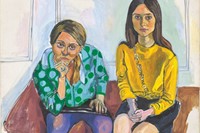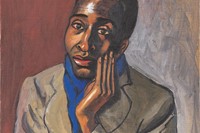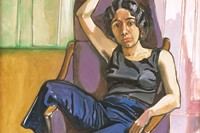In 1970, Alice Neel created the most startling depiction of Andy Warhol in art history. The American pop artist’s usual public persona – bottled-up performance replete with make-up, wig and sunglasses – was radically dismantled here. Made just two years after he was shot by Valerie Solanas, the painting – of a topless Warhol with his eyes closed and mangled torso scars on show – has a quiet, probing vulnerability that is emblematic of Neel’s artistic mission: to strip away the protective masks people put on in public. “As for people who want flattering paintings of themselves, even if I wanted to do them, I wouldn’t know what flattery is,” Neel wrote in 1976. “To me, as Keats said, beauty is truth, truth beauty … I paint to try to reveal the struggle, tragedy and joy of life.”
This extraordinary painting is featured in the Barbican’s new survey, Alice Neel: Hot Off The Griddle, alongside depictions of New York’s prominent 20th century cultural figures; art historian Linda Nochlin, poet Frank O’Hara, communist academic Harold Cruse, and downtown personalities associated with Warhol’s Factory. Outside of celebrity, Neel spent her life painting ‘everyday’ people that she met while living in Spanish Harlem in New York, like a Vietnam war draftee, a ribless tuberculosis patient, and pregnant women bulging with nerves. “One of the primary motives of my work was to reveal the inequalities and pressures as shown in the psychology of the people I painted,” said Neel, while the show’s curator, Eleanor Nairne, explains: “She didn’t make any images without there being a kind of political heartbeat to them.”
A self-confessed “anarchic humanist” and “collector of souls,” with this exhibition (and previous shows at the Pompidou in Paris and the Met in New York) Neel is finally getting her due as one of the best portrait artists of the 20th century. Here, four writers, curators and art historians – Olivia Laing, Hilton Als, Katy Hessel and Eleanor Nairne – speak on Neel’s artistic legacy.
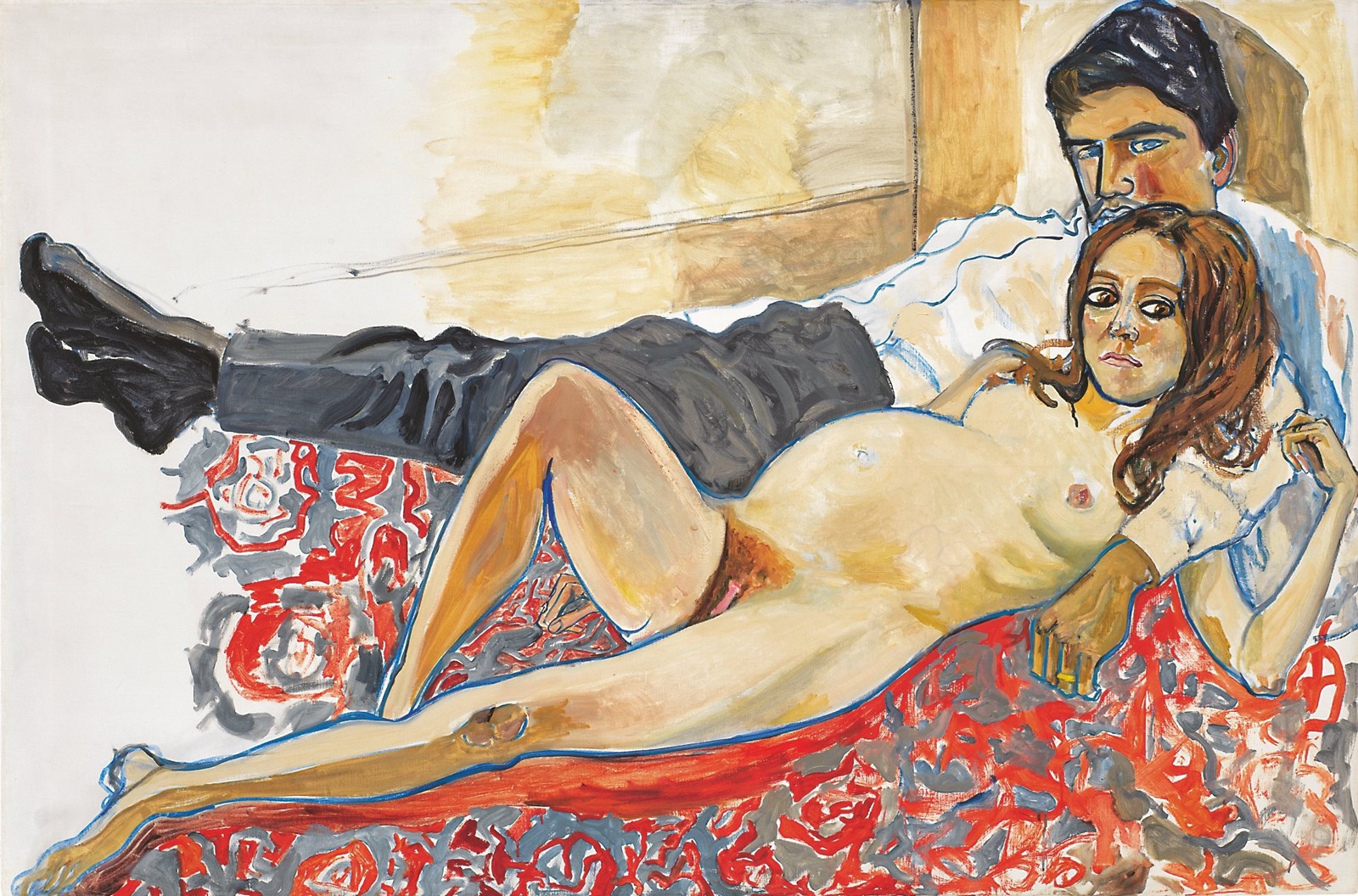
Olivia Laing, Writer, Critic and Author of The Lonely City
“The first work I saw was Alice’s portrait of Andy Warhol, which I wrote about at the end of The Lonely City. It blew my mind. Almost every other image of Andy in existence is of the cartoon version, the mask he made for himself, but Alice saw straight through it. She’s so tender with him, but so incredibly revealing. She paints him topless, in his weird trousers and pointy shoes. You can see the corset he had to wear after Valerie Solanas shot him. You can see his scars as well as his little breasts. His face is exquisite. You can feel how much he longs to be beautiful. She’s done him out in the most flattering, girlish pastel shades but she’s also stripped him bare.
“[My favourite thing about Neel’s work is] the stringent honesty, the relaxed strokes, the humour, the exacting, witty way she looks at people. Take the portrait of Frank O’Hara. Brutal! He was so hot, and she makes him look sleazy and hungover, with epically bad teeth. It adds so much depth to the biographical record, to look at how Alice saw a person. Or the painting of the performer Annie Sprinkles, in lingerie, tits out. It’s so unapologetic and physically confronting. She lets people be themselves.
“Alice was in such a variety of worlds. And she opens them up to you. She makes a warm introduction. There was a show at Victoria Miro a few years ago, Uptown, curated by Hilton Als. I went in alone, and it was like being in a room full of powerful people. They were almost vibrating with presence. I think she answers something right now that’s about a desire for unfiltered reality, for connection. Her people look back.”
“Her ability to not look away from the sitter, to not look away from the soul, and to see the rewards and damages of being human, is remarkable” – Hilton Als
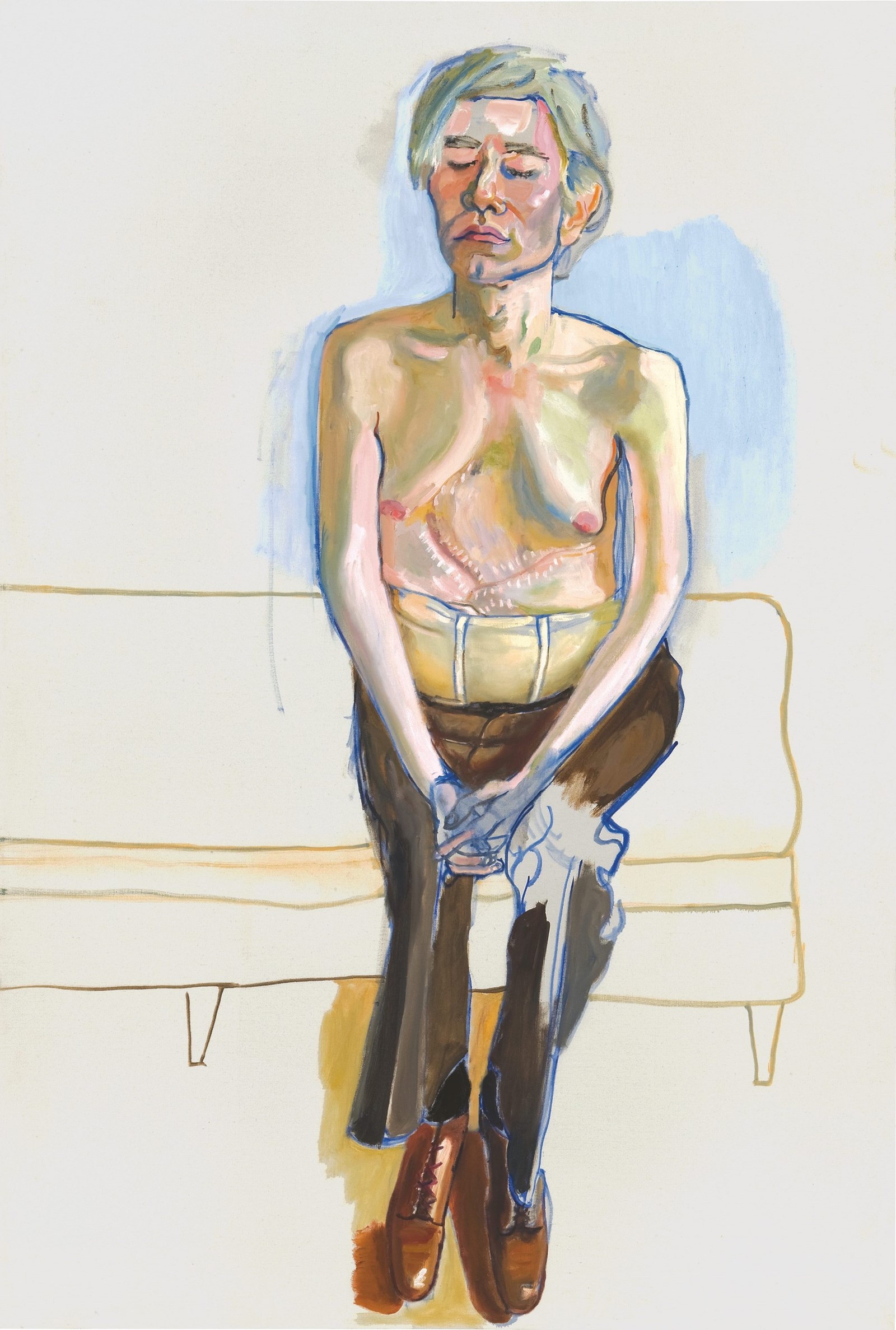
Hilton Als, Writer, Critic and Author of White Girls
“While studying art history at Columbia University in the early to mid-1980s, a great professor, Kenneth Silver, showed a portrait that Alice had painted of Linda Nochlin. I was so curious about this work, so I went to the library and started reading a book of her work, and I realised that a lot of the portraits that she had done were of people of colour in Harlem, where she lived. I was so fascinated by her depiction of that community. This was during a time when there was no such thing as African-American studies or African-American art – there was no department until 1991. So she was a tie to a community of people that were not unlike the people that I knew growing up. I was also fascinated by this woman who had put her own difference aside in order to see another world.
“In 2017, I curated a show at David Zwirner in New York called Uptown. A while ago, David [Zwirner] and I were at a party, and I had said, ‘Why haven’t you shown Alice Neel’s portraits of people of colour?’ Six years later, he called up and said that there were things in the estate that had changed, and would I come and do the show? It was such an incredible act of generosity on his part; we didn’t know each other very well. But it was an opportunity for that work, that had such resonance for me as an undergraduate, to be seen. [Curating the show] was really goose pimply because her work is so powerful that you can actually feel the souls of her sitters. It was almost as if, collectively, this idea that people of colour that she had admired or thought of during her time living in Harlem were given an audience. The pictures hadn’t really been seen that much. It was a goose-pimply moment for them to exhale, and to be in space.
“Alice’s politics get overlooked, and her interest in other people. Given where she came from, she shouldn’t have ended up doing the work that she did. Her ability to not look away from the sitter, to not look away from the soul, and to see the rewards and damages of being human, is remarkable.
“In a world dominated by movement – TikTok, Instagram, all of that stuff – it’s wonderful to be in a space where each image gives you pause, and that you have reflection. Her work is reflection based on reflection. So, to have those moments where you can actually be together with an image and to look into the image and have it look into you is remarkably different than most image intake these days.”
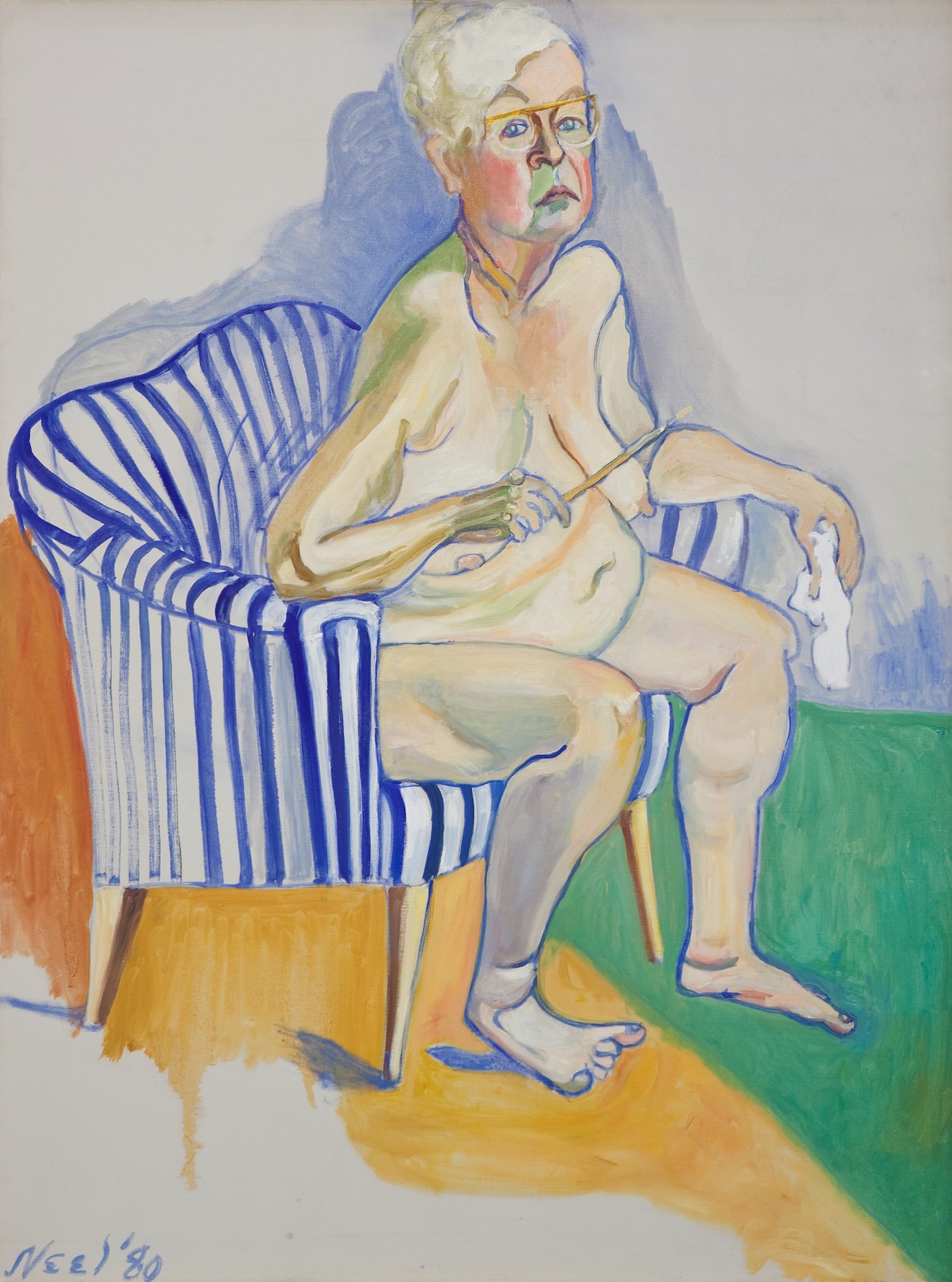
Katy Hessel, Writer, Art Historian and Author of The Story of Art Without Men
“I first came across Alice Neel’s work after a tutor at UCL suggested I look at her. I got this book of hers called Painted Truths, and as soon as I looked at these paintings, something inside of me changed. I’d never seen something like it. In a way, the concept was very simple – they’re just portraits, right? But there was something so different about how she portrayed her sitters, and how it was almost like this portrait of 20th-century America, from the 1930s until the 1980s.
“She completely draws you in. The paintings are so expressive, and not always the most flattering, but they’re so intensely intimate. She captures life in the second of a moment. You feel like you’re in that room with Alice, and you can tell what her mood was by the amount of paint she’s got on the canvas. For example, the Andy Warhol painting is just so spare because there’s nothing left of him. It’s like he’s a shell, and she captures that.
“[Neel’s work is popular today] because she paints honestly and truthfully. They feel so contemporary, her paintings, it is kind of incredible. Even the freshness of the paint, the electricity of an orange, it can almost feel like it was done yesterday. There is something so timeless about her work, the stories that she tells – they’re just people. What’s amazing is that you connect with all these people who are from all kinds of different backgrounds. That’s the power of great art: to speak to so many different places, eras, people, dynamics and backgrounds.
“It’s just extraordinary that she was mixing with these crowds, but that she also didn’t discriminate. She could be painting one of the most amazing playwrights, artists or glitzy person of her generation, but she gives equal prominence to her landlord’s son Benjamin, because he is worth just as much as an editor at Vogue. Representation can be so powerful. A 14-year-old might go to the exhibition and actually see themselves in it. For me, that makes all the difference.”
“She’s a deeply political artist, and we live in deeply political times” – Eleanor Nairne
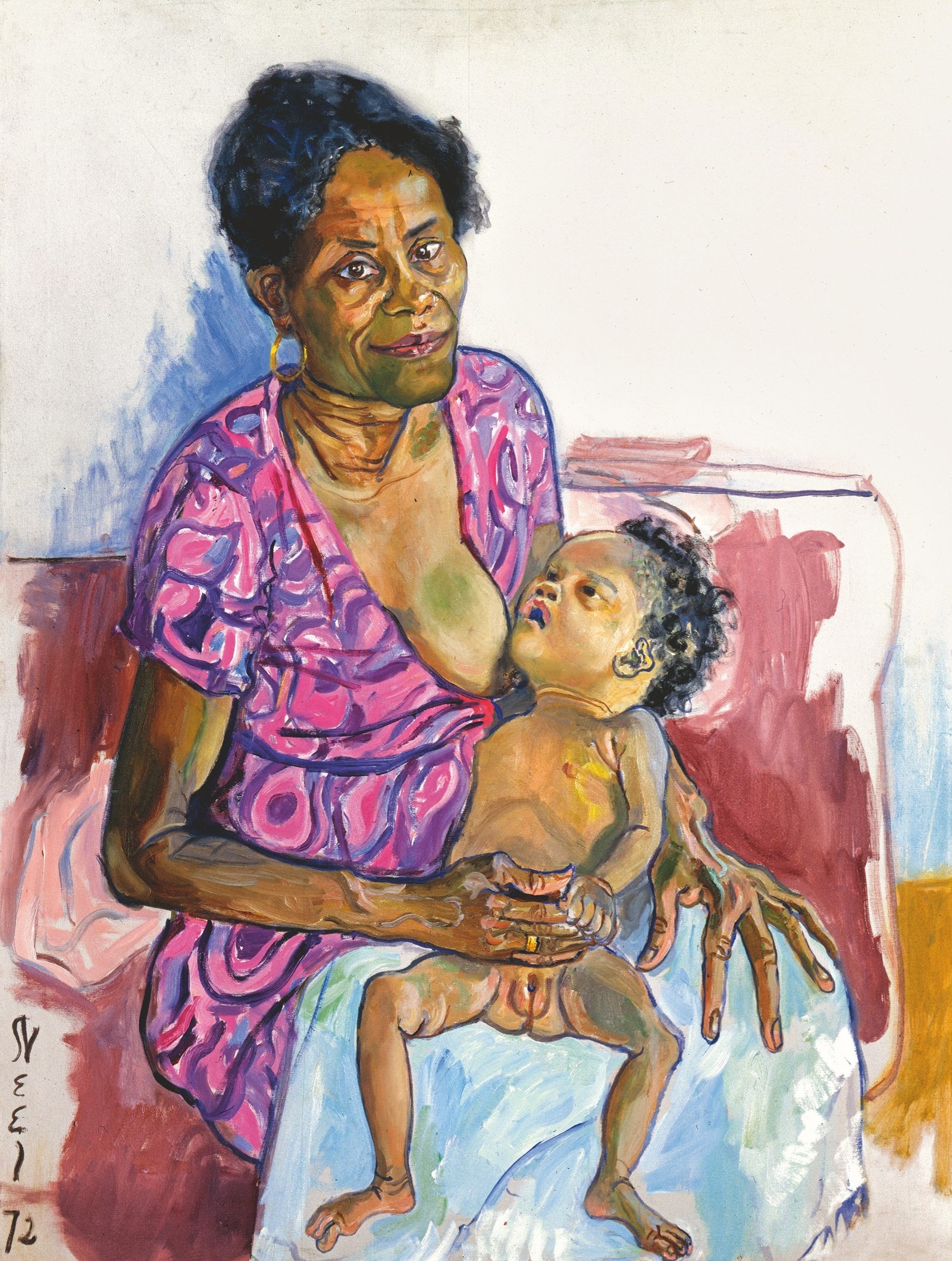
Eleanor Nairne, Curator at Barbican Art Gallery and of its new exhibition Alice Neel: Hot Off The Griddle
“There’s a depth of empathy that you see within Alice’s paintings. In this post-pandemic moment, I think we feel especially attuned to artists who have that depth of human feeling. She painted almost exclusively from life and she’s very attuned to the kind of fleshiness of human beings – she really revels in that. She’s also a deeply political artist, and we live in deeply political times.
“She belongs to a lineage of artists who understood the idea of a very different concept of what portraiture might be. She hated the word portraiture, she called them pictures of people. In that distinction, we can hear an artist who is thinking about class and is thinking about the fussiness of portraiture as a genre, thinking about the irrelevance of art history. She’s thinking about how to make a picture of an everyday person that might genuinely capture two things: something of who they are – that impossible, ineffable thing – but also something of the age that has shaped them. We are all unique individuals, but we are also shaped by structural conditions of our age, and of the class and of the background that we are born into. She said her aim was to paint ‘what the world has done to them [Neel’s subjects] and their retaliation.’ She’s such a humanist.
“Now we’re in a great moment of figurative painting. You could say that it’s more fashionable now than it has ever been. You can name so many people who are influenced by her work: Jordan Casteel, Chantal Joffe. There are lots of contemporary artists who feel in dialogue with what she was trying to do, which was to see a person in their multiplicity, to see the complexity of a person and the complexity of the forces that shape a person.”
Alice Neel: Hot Off The Griddle is on show at the Barbican in London until 21 May 2023.


